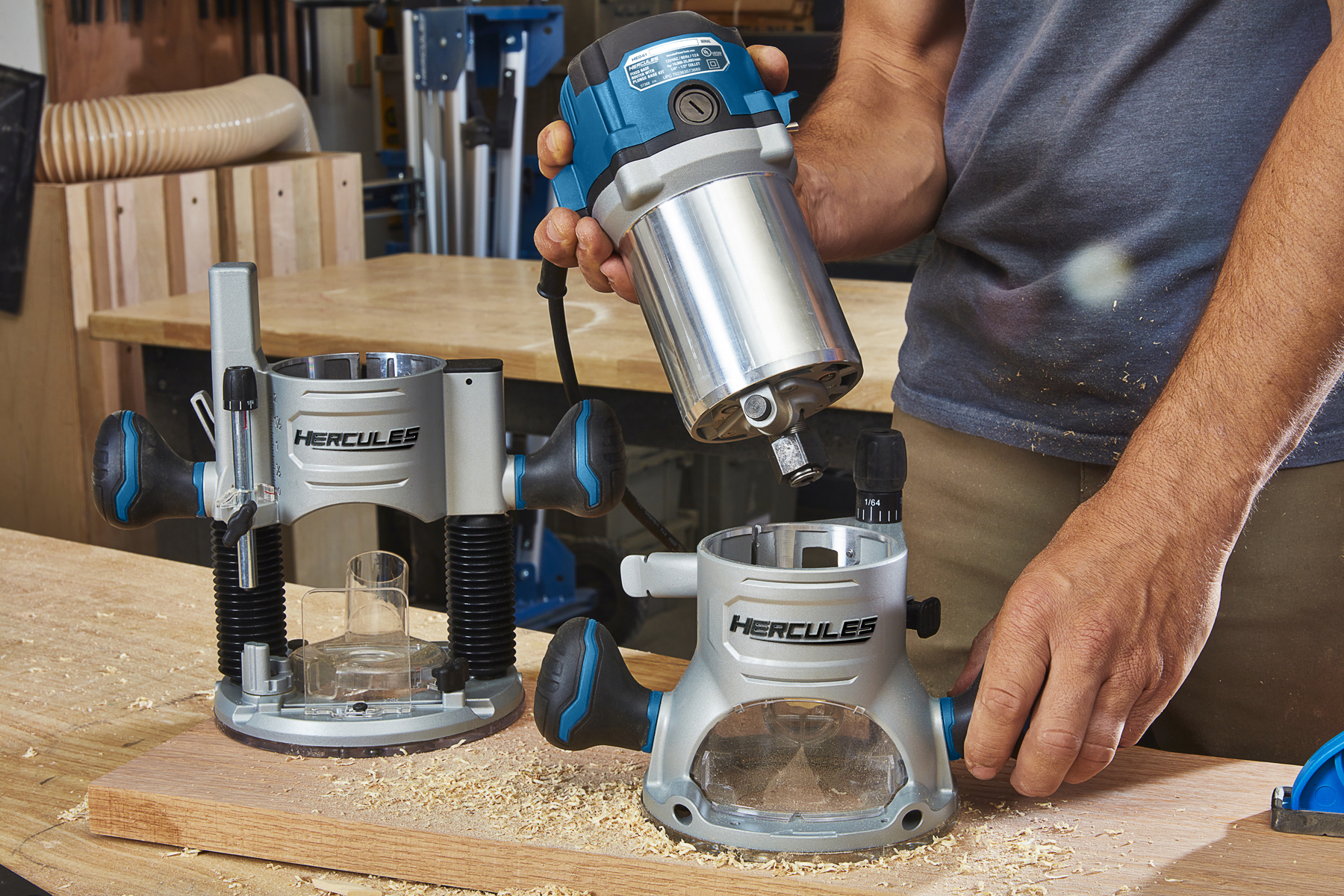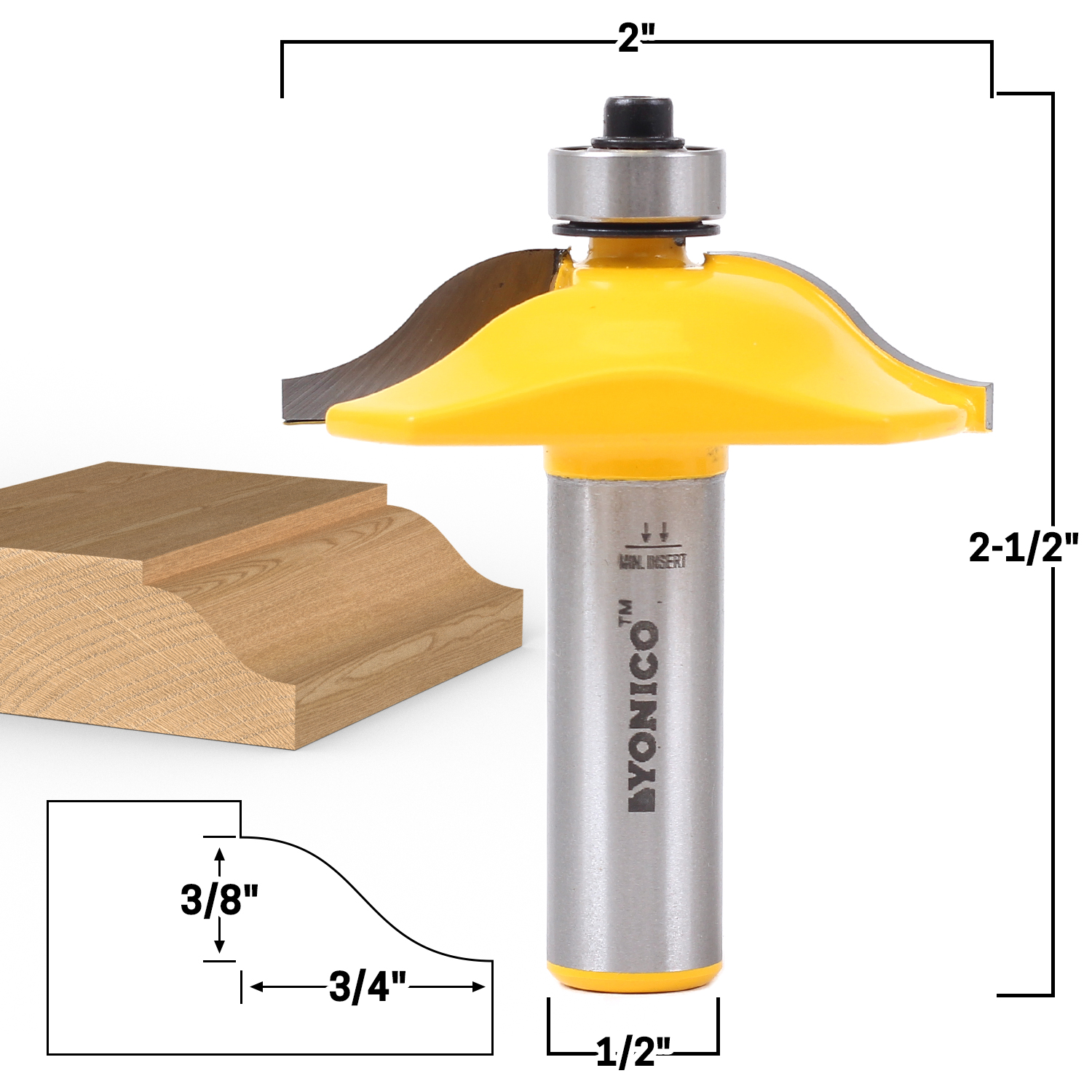Harbor Freight Cabinet Quality and Router Bit Compatibility: Harbor Freight Cabinet Door Router Bits
Harbor Freight cabinets are a popular choice for budget-conscious woodworkers, but their suitability for precision work with router bits depends on several factors. Understanding the construction materials and limitations of these cabinets is crucial for achieving satisfactory results and avoiding potential damage to your tools or workpiece.
Harbor Freight Cabinet Construction and Router Bit Use
Harbor Freight cabinets are typically constructed from steel, often with a powder-coated finish. The steel itself is generally of a lower gauge (thinner) compared to higher-end professional-grade cabinets. This thinner gauge steel can lead to increased vibration during router operation, potentially affecting the accuracy and precision of your cuts. The density of the steel is also a factor; denser steel would offer better stability, but Harbor Freight cabinets often prioritize affordability over extreme density. The powder coating, while providing some protection against rust, adds a negligible amount to the overall rigidity of the cabinet. The overall result is a cabinet that may be suitable for lighter-duty router work, but could prove insufficient for high-powered routers or extensive, demanding routing operations.
Harbor Freight Cabinet Build Quality Compared to Other Brands
Compared to professional-grade cabinets from brands like Grizzly, Jet, or Shop Fox, Harbor Freight cabinets generally exhibit less rigidity and stability. Professional cabinets often feature heavier gauge steel, more robust construction techniques (like fully welded seams), and sometimes even vibration-dampening features. This difference in build quality translates directly to router use: professional cabinets minimize vibration, resulting in cleaner cuts and reduced risk of bit chatter or workpiece damage. The difference is particularly noticeable when using larger, more powerful routers or when performing intricate, high-precision routing tasks.
Router Bit Type and Cabinet Material Interaction
Different router bits interact differently with the steel construction of Harbor Freight cabinets. For example, straight bits are generally less susceptible to issues caused by cabinet vibration compared to bits with more aggressive cutting profiles. Rabbetting bits, dado bits, and other bits with multiple cutting edges can be more prone to issues such as chatter or uneven cuts if the cabinet is not sufficiently rigid. The potential for damage to the bit itself is also higher with a less stable work surface. Using a less powerful router, or adding clamping support to the workpiece, can mitigate some of these issues. However, for truly precise and consistent results, a more robust cabinet is recommended.
Harbor Freight Cabinet Model Comparison
| Model | Material | Thickness (Approximate) | Router Bit Compatibility Rating |
|---|---|---|---|
| Ultra HD 44″ Steel Rolling Cabinet | Steel (Powder Coated) | Variable, generally thin gauge | Fair |
| 5-Drawer Steel Rolling Cabinet | Steel (Powder Coated) | Variable, generally thin gauge | Fair |
| 4-Drawer Mobile Workbench | Steel (Powder Coated) | Variable, generally thin gauge | Good (with added support) |
Router Bit Selection and Usage with Harbor Freight Cabinets

Working with Harbor Freight cabinets and router bits requires careful attention to safety and technique. While these cabinets are generally affordable and functional, understanding the limitations of the material and employing proper router techniques is crucial for achieving clean, precise cuts and avoiding damage to both the bit and the cabinet. This section details safe practices and bit selection for various tasks.
Safe Router Bit Usage with Harbor Freight Cabinets
Always prioritize safety when using a router. Begin by ensuring your work area is well-lit and free of clutter. Secure the cabinet firmly to your workbench using clamps to prevent movement during routing. Wear safety glasses or a face shield to protect your eyes from flying debris. Use hearing protection, as routers can be quite loud. Never operate a router while tired or distracted. Before starting any cut, perform a test run on a scrap piece of similar material to check the bit’s performance and adjust settings as needed. Finally, always disconnect the router from the power source before making adjustments or changing bits.
Router Bit Speed and Feed Rate
The speed at which the router bit spins (speed) and the rate at which you move the router across the workpiece (feed rate) significantly impact the quality of your cut. Too high a speed can cause burning and tear-out, especially with softer woods often used in Harbor Freight cabinets. Too low a speed can lead to a dull bit and uneven cuts. Similarly, an overly aggressive feed rate can result in tear-out and a rough finish. A slower feed rate with a properly selected bit speed generally produces cleaner results. Experimentation on scrap material is key to finding the optimal combination for your specific bit, wood type, and project. For example, when using a 1/2″ straight bit to create a dado, a slower speed and moderate feed rate are usually best to avoid chipping.
Router Bit Types for Harbor Freight Cabinets
Different router bits are designed for specific tasks. For example:
- Straight Bits: Used for creating dadoes, rabbets, and grooves. A 1/4″ straight bit is great for smaller grooves, while a 1/2″ bit is better suited for larger dadoes. Always ensure the bit is sharp to prevent tear-out.
- Rounding Over Bits: Create a rounded edge on cabinet doors or shelves. Various radius sizes are available, allowing for customization of the round-over profile. A 1/4″ round-over bit is common for smaller cabinets.
- Edge Profiling Bits: Used to create decorative edges. These bits come in a wide variety of profiles, from simple ogee shapes to more complex designs. Choosing the right profile depends on the desired aesthetic.
- Rabbetting Bits: These bits are specifically designed for creating rabbets, which are recessed grooves used for joining pieces of wood. They are commonly used when assembling cabinet frames or doors.
Visual Guide to Router Bit Setups
Imagine a diagram showing three common router bit setups on a section of Harbor Freight cabinet material.
Image 1: Edge Profiling shows a cabinet edge with a decorative profile created using an ogee edge profiling bit. The bit is depicted properly installed in the router, with the cabinet securely clamped to a workbench. Arrows indicate the direction of router movement for a smooth, even cut.
Image 2: Dado Cut illustrates a dado being cut into the cabinet material using a straight bit. The diagram emphasizes the proper depth of cut, showing the bit cutting a clean, consistent groove. The image highlights the use of a fence or jig for straight, accurate cuts.
Image 3: Rabbeting depicts a rabbet being cut along the edge of a cabinet piece. A rabbeting bit is shown in the router, with the cabinet firmly clamped. The image emphasizes the depth and width of the rabbet, crucial for proper joinery. The direction of the router’s movement is clearly indicated, emphasizing the importance of smooth, controlled passes. All three images clearly show the use of safety glasses and a dust collection system.
Troubleshooting and Maintenance

Working with router bits and Harbor Freight cabinets can sometimes present challenges. Understanding common problems and implementing preventative measures will help you achieve better results and extend the life of your tools and cabinets. This section covers troubleshooting common issues and maintaining your equipment for optimal performance.
Bit Breakage
Bit breakage is a frustrating problem. It usually happens due to forcing the bit, using a dull bit, or using the wrong bit for the job. Forcing a bit, especially through hard knots in the wood, puts immense stress on the bit’s cutting edges, leading to snapping. Using a dull bit requires more force, increasing the chance of breakage. Selecting an inappropriately sized or designed bit for the task (like using a small bit for a large cut) can also result in breakage. To prevent this, always use sharp bits, choose the right bit for the material and cut, and avoid forcing the bit; if it’s resisting, adjust your approach or use a different technique. Regularly inspect your bits for any signs of damage before use.
Chipping
Chipping, where the wood tears or splinters around the cut, often occurs because of dull bits, improper feed rate (moving the router too fast or too slow), or using the wrong bit type for the wood. A dull bit won’t cut cleanly, causing tear-out. Moving the router too quickly can also lead to chipping as the bit doesn’t have enough time to remove the material smoothly. The wrong bit type might lack the necessary features to prevent chipping in a specific type of wood. Using a sharper bit, adjusting your feed rate, and selecting a bit designed for clean cuts (like a bit with a bearing to control depth) will minimize chipping. Consider using a slower speed and multiple passes for cleaner results, especially with harder woods.
Uneven Cuts, Harbor freight cabinet door router bits
Uneven cuts are frequently caused by a misaligned router bit, an inconsistent feed rate, or a warped cabinet. If the bit isn’t properly seated and aligned in the router, the cut won’t be even. An inconsistent feed rate, varying the speed and pressure while routing, leads to uneven depth. A warped cabinet, even slightly, will create uneven surfaces, making it hard to get a clean, consistent cut. To solve this, ensure your bit is securely and correctly installed. Maintain a consistent feed rate and speed. If the cabinet is warped, consider using clamps to hold it steady during routing or address the warp before proceeding. Consider using a router jig or guide for extra precision, especially on large or important cuts.
Cabinet Damage
Damage to the cabinet itself is often the result of improper clamping, too much pressure, or using the wrong bit for the job. Poor clamping can lead to the wood shifting during the cut, resulting in a damaged surface. Applying too much pressure forces the bit and can cause tear-out or breakage. Using an incorrect bit can also lead to gouges or unexpected cuts. To prevent cabinet damage, use appropriate clamping techniques to securely hold the workpiece, avoid excessive pressure, and always choose the right bit for the job. Use test cuts on scrap wood first to verify your bit selection and technique.
Preventative Maintenance
Regular maintenance is crucial for both your router bits and your Harbor Freight cabinets. For your bits, this includes cleaning them after each use to remove sawdust and resin buildup. Store them in a safe, organized manner to prevent damage. Sharpening dull bits is essential for achieving clean cuts and preventing breakage. For your cabinets, keeping them clean and free of debris will prevent damage and help them last longer. Periodically inspect the cabinets for any signs of damage or wear and address any issues promptly. Proper storage in a dry environment is important to prevent warping or damage. Remember that a little preventative maintenance goes a long way in ensuring both your tools and cabinets remain in good working order.
